|
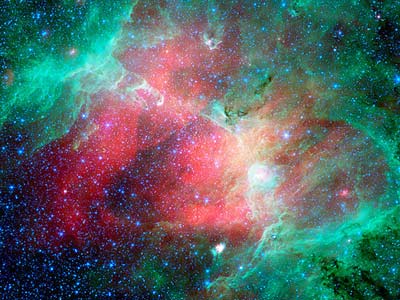
|
Eagle Nebula
seen in green in upper left,
spans over 200 trillion miles.
|
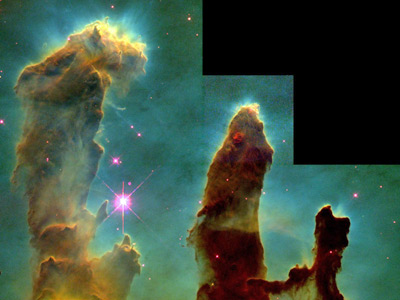
|
"Pillars of Creation"
is a stellar nursery. Each pink dot
is a new star being born.
|
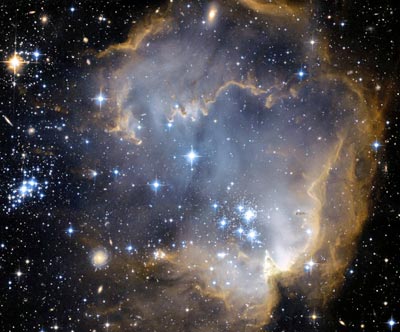
|
Cluster of new stars
in Small Magellanic Cloud,
a satellite galaxy of our Milky Way.
|
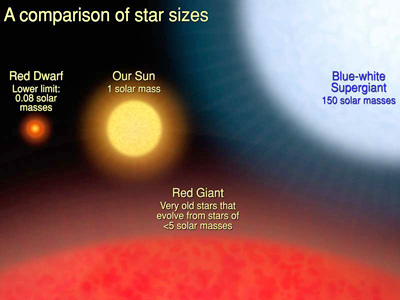
|
Star Type Comparison
NASA chart comparing several
star types to our Sun, a yellow dwarf star.
|
Comparison of Celestial Object Sizes
The largest object in each group is the smallest
in the following group.
|
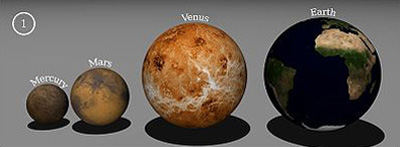
|
|
To start, let's compare our solar system, from Mercury to Earth
|
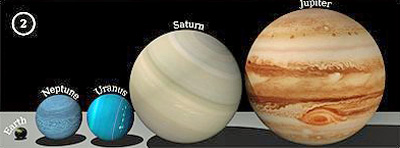
|
|
Here Earth is on the far left, with our largest planet Jupiter on the far right.
|
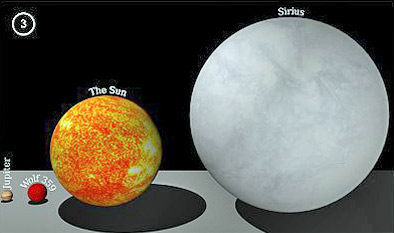
|
|
This
image compares the sizes, from left to right, of: Jupiter, the largest
planet in our Solar System; Wolf 359, a red dwarf star; our Sun, a
yellow dwarf star; and Sirius, the brightest star in our sky.
|
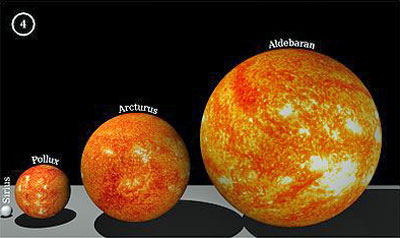
|
In the
this image, we see that Sirius is but a tiny dot at the left when
compared with the progressively larger red giants Pollux, Arcturus, and
Aldebaran.
|
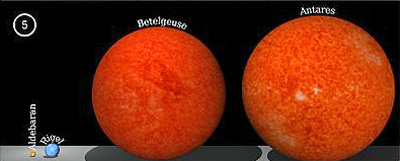
|
|
Jumping
to a vaster scale, Aldebaran is barely visible compared with:
blue-white giant Rigel, which marks Orion’s right foot and is 40,000
times brighter than our Sun (if viewed from the same distance); red
supergiant Betelgeuse, which marks Orion’s left shoulder; and an even
larger red supergiant, Antares.
|
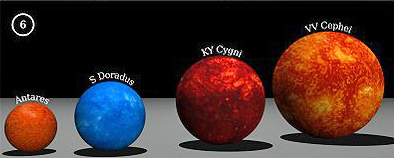
|
|
Finally,
we get to the real monsters, comparing: Antares, blue hypergiant S
Doradus, red supergiant KY Cygni; and the king of beasts, red
supergiant VV Cephei, whose diameter is estimated to be over 1000 times
that of our Sun. If placed at the center of our Solar System, VV Cephei
would extend nearly to Jupiter; we’d be toast.
|
Celestial Images, page 1
Celestial Images, page 3
|